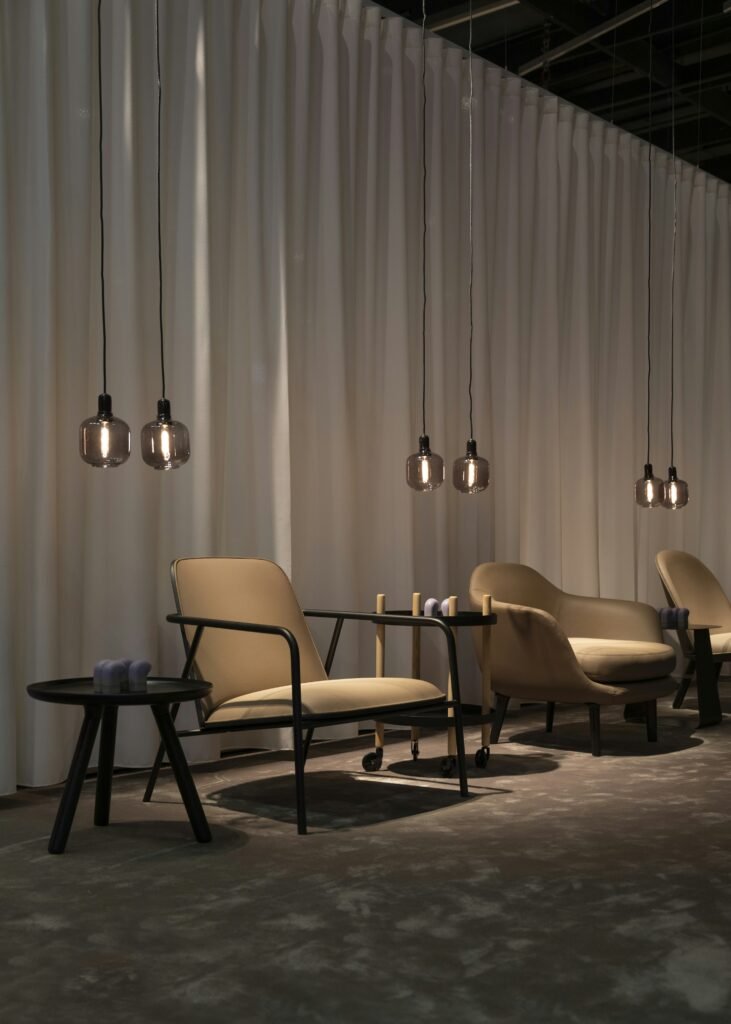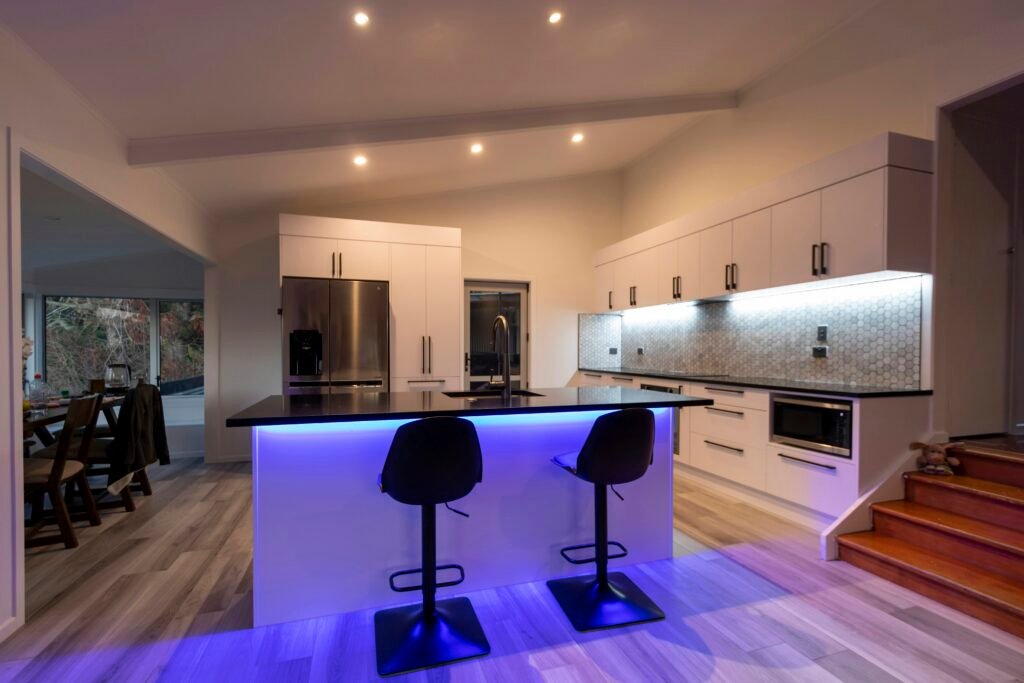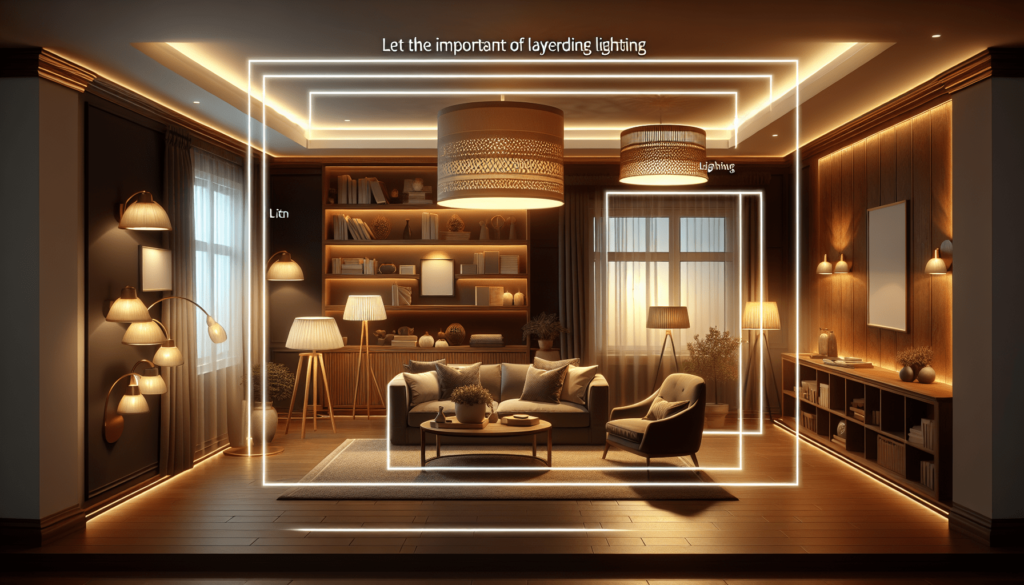Welcome to the world of multi-layered lighting design, where the magic of creating ambiance through various light sources comes to life. By blending different types of lighting such as ambient, task, and accent lighting, you can transform any space into a cozy and inviting environment. Whether you’re looking to enhance the mood in your home or create a welcoming atmosphere in a commercial setting, mastering the art of multi-layered lighting design is the key to achieving a truly captivating space. Let’s dive into the details of how you can bring your space to life through the strategic use of lighting.
Enhancing Ambiance: The Art of Multi-layered Lighting Design
Have you ever walked into a room and felt instantly at ease, all thanks to the way the lighting is set up? Curious about how to achieve that perfect ambiance in your own space? Look no further! In this article, we will explore the art of multi-layered lighting design and how it can transform any room into a cozy and inviting oasis. Let’s dive in!

Understanding Multi-layered Lighting Design
So, what exactly is multi-layered lighting design, and why is it important? Think of it as the secret ingredient to creating a well-balanced and visually pleasing atmosphere in any room. Instead of relying on a single source of light, multi-layered lighting uses a combination of different types of lighting fixtures to illuminate a space from various angles and heights. This not only enhances the overall ambiance but also adds depth and dimension to the room.

The Three Key Layers of Lighting
When it comes to multi-layered lighting design, there are three key layers that work together to create the perfect balance of light in a room: ambient, task, and accent lighting. Each layer serves a specific purpose and, when combined, helps to achieve an inviting and functional space.
Ambient Lighting
Ambient lighting, also known as general lighting, acts as the primary source of light in a room. This layer provides overall illumination and sets the tone for the space. Think of it as the foundation of your lighting design, creating a warm and welcoming atmosphere. Common examples of ambient lighting include overhead fixtures, recessed lighting, and chandeliers.
Task Lighting
Task lighting is focused on providing specific and concentrated light for activities such as reading, cooking, or working. This layer helps to enhance visibility and reduce eye strain by illuminating particular areas where tasks are performed. Desk lamps, under-cabinet lights, and pendant lights are all examples of task lighting that can be used to brighten up workspaces and activity areas.
Accent Lighting
Accent lighting is all about adding drama and visual interest to a room by highlighting architectural features, artwork, or decorative elements. This layer creates depth and dimension by drawing attention to focal points and creating a focal point in a room. Wall sconces, track lighting, and picture lights are popular choices for accent lighting that can instantly elevate the ambiance of a space.

The Importance of Layering Different Light Sources
Now that you understand the three key layers of lighting, it’s essential to recognize the importance of layering different light sources to create a harmonious balance in a room. By combining ambient, task, and accent lighting, you can achieve a dynamic and inviting atmosphere that caters to both the functional and aesthetic needs of the space.
Achieving Balance and Contrast
Layering different light sources allows you to play with balance and contrast, creating a visually appealing environment that is both well-lit and cozy. For example, pairing soft ambient lighting with focused task lighting can help to create a harmonious balance between function and comfort. Similarly, combining accent lighting with ambient lighting can add depth and drama to a room by highlighting specific areas and creating a sense of contrast.
Enhancing Mood and Atmosphere
Multi-layered lighting design is an excellent way to enhance the mood and atmosphere of a space. By adjusting the intensity and color temperature of each layer, you can create different moods and ambiances to suit various occasions. For example, dimming the ambient lighting and increasing the accent lighting can create a warm and intimate setting for a cozy dinner party, while bright task lighting can provide the functionality needed for cooking and preparing meals.

Practical Tips for Designing Multi-layered Lighting
Ready to transform your space with multi-layered lighting design? Here are some practical tips to help you get started:
Choose the Right Fixtures
When selecting lighting fixtures for each layer, consider the purpose and style of the room. Opt for fixtures that complement the decor and architecture of the space while providing the necessary illumination. Mix and match different types of fixtures, such as chandeliers, pendants, and wall sconces, to create a cohesive and visually appealing lighting design.
Play with Light Levels
Experiment with light levels and intensities to create different effects and atmospheres in a room. Use dimmer switches and smart lighting controls to adjust the brightness of each layer according to your needs. This flexibility allows you to customize the lighting to suit various activities and occasions, from relaxing evenings to lively gatherings.
Layer Lighting at Different Heights
To achieve a well-balanced and dynamic lighting design, make sure to layer lighting at various heights throughout the room. Mix overhead fixtures with floor lamps, table lamps, and wall sconces to create layers of light that illuminate different areas of the space. This approach adds depth and dimension to the room while enhancing the overall ambiance.
Consider Color Temperature
Pay attention to the color temperature of your lighting fixtures to create a cohesive and inviting atmosphere. Warm white light (2700K-3000K) is ideal for creating a cozy and intimate setting, while cool white light (3500K-4100K) is perfect for task-oriented areas where visibility is crucial. Play with different color temperatures to achieve the desired mood and ambiance in each space.

Bringing It All Together
In conclusion, multi-layered lighting design is the key to creating a well-balanced and inviting atmosphere in any room. By understanding the three key layers of lighting, layering different light sources, and following practical tips for designing multi-layered lighting, you can transform your space into a cozy and functional oasis that caters to your needs and preferences. So, why wait? Start experimenting with multi-layered lighting design and enhance the ambiance of your space today!



